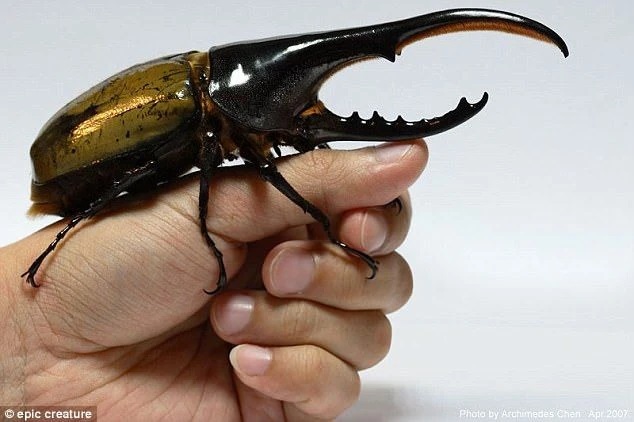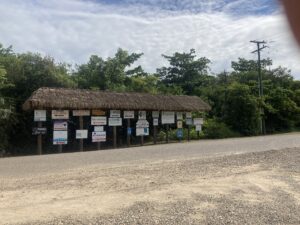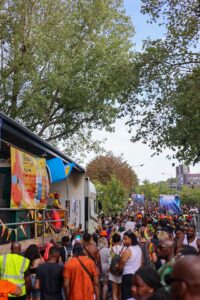In the lush jungles of Belize, amidst a cacophony of wildlife and verdant greenery, resides a true giant of the insect world—the Hercules Beetle. This magnificent creature, known for its massive size, impressive horns, and striking appearance, captivates the imagination of all who encounter it. As one of the largest insects on the planet, the Hercules Beetle is not just a marvel of nature but also a key player in the delicate ecosystems of Belize. Join us as we delve into the fascinating world of this mighty beetle, uncovering its secrets and exploring its significance in the rich tapestry of Belizean wildlife.
The Hercules Beetle: A Colossal Creature of Belize’s Jungles
In the dense jungles of Belize, where biodiversity thrives in every corner, the Hercules Beetle stands out as a true titan among insects. This colossal creature belongs to the Dynastes genus, renowned for its massive size and formidable appearance. Measuring up to 6 inches in length, with a robust body and impressive horns, the Hercules Beetle commands attention wherever it roams.
One of the most striking features of the Hercules Beetle is its formidable horns, which are more prominent in males and serve multiple purposes. These horns, often resembling the tines of a pitchfork, are not just for show; they play a crucial role in male-to-male combat during mating season. Competing for the attention of females, male Hercules Beetles engage in fierce battles, using their horns to push and wrestle opponents in a display of strength and dominance.
Despite their intimidating appearance, Hercules Beetles are gentle giants, primarily feeding on decaying fruits and vegetation. Their diet contributes to the ecosystem by aiding in the decomposition process, making them important players in nutrient recycling within Belize’s rainforests. Additionally, their large size and slow movement make them easy targets for predators, highlighting the delicate balance between survival and predation in the jungle’s intricate web of life.
The habitat of the Hercules Beetle reflects Belize’s diverse landscape, ranging from humid rainforests to subtropical regions. These beetles prefer areas with ample vegetation and humidity, where they can find food and suitable breeding sites. Their presence in Belize’s jungles underscores the country’s commitment to preserving its natural heritage, as efforts to conserve these habitats also benefit a myriad of other species that call these ecosystems home.
Encountering a Hercules Beetle in the wild is a rare and awe-inspiring experience, reminding us of the wondrous diversity of life on our planet. As Belize continues to protect its natural treasures, including iconic species like the Hercules Beetle, it ensures that future generations can marvel at these colossal creatures in their natural habitat.
Unveiling the Mysteries of the Hercules Beetle’s Enormous Horns
The Hercules Beetle’s impressive horns are not just a symbol of its strength and size; they also hold fascinating secrets about its biology and behavior. These iconic features, often the first thing to capture one’s attention when encountering a Hercules Beetle, serve multiple functions that contribute to the beetle’s survival and reproduction.
Contrary to popular belief, the primary purpose of the Hercules Beetle’s horns is not for defense against predators. While they can certainly be used in defense when necessary, these horns are primarily used in intraspecific competition among males during mating season. The size and symmetry of a male’s horns play a significant role in determining its success in securing a mate. Females are often attracted to males with larger and more symmetrical horns, as they are indicative of genetic fitness and good health.
The development of these horns is a marvel of evolutionary adaptation. They start as small projections on the beetle’s head during the larval stage and gradually grow and develop into the impressive structures seen in adult males. The growth of the horns is influenced by various factors, including nutrition, hormone levels, and genetic predisposition.
During mating rituals, male Hercules Beetles engage in dramatic displays of strength and dominance using their horns. These contests can be intense, with beetles pushing and grappling with each other to establish hierarchy and mating rights. The winner of these battles gains access to females for mating, ensuring the continuation of their genetic lineage.
Beyond their role in mating competition, the Hercules Beetle’s horns also serve as a sensory organ. They are equipped with sensory cells that can detect changes in the environment, allowing the beetle to navigate its surroundings and locate potential mates or food sources.
Overall, the enormous horns of the Hercules Beetle are not just a visual spectacle but a testament to the complexities of nature’s design and the intricate adaptations that contribute to the survival and reproduction of this remarkable insect.
From Larva to Titan: The Fascinating Life Cycle of Belize’s Hercules Beetle
The life cycle of the Hercules Beetle is a captivating journey marked by remarkable transformations and adaptations that shape its existence in Belize’s vibrant ecosystems. Understanding this life cycle provides insight into the challenges and triumphs faced by these beetles as they navigate their environment from infancy to adulthood.
It all begins with the egg stage, where female Hercules Beetles carefully select suitable locations to lay their eggs. These locations often include rotting logs or decomposing vegetation, providing a nutrient-rich environment for the developing larvae. Once hatched, the larvae, known as grubs, embark on a journey of growth and development that spans several months.
The grub stage is characterized by voracious feeding as the larvae consume organic matter to fuel their rapid growth. They play a vital role in the decomposition process, breaking down dead plant material and recycling nutrients back into the soil. This ecological role highlights the importance of Hercules Beetles in maintaining the balance of Belize’s ecosystems.
As the grubs mature, they undergo a series of molts, shedding their exoskeletons to accommodate their increasing size. This molting process is crucial for their development, allowing them to reach their full potential as adults. Once fully grown, the grubs undergo metamorphosis, transforming into pupae within a protective cocoon.
The pupal stage is a period of transformation and internal restructuring as the Hercules Beetle undergoes metamorphosis. Inside the cocoon, complex changes occur as the beetle’s body undergoes dramatic alterations, preparing it for its adult life. This stage is a critical juncture in the beetle’s life cycle, marking the transition from a subterranean dweller to a majestic aerial inhabitant.
Finally, the adult Hercules Beetle emerges from its cocoon, revealing its magnificent form adorned with impressive horns and a robust body. This stage marks the culmination of a journey from humble beginnings as a larva to becoming a titan of the insect world, ready to contribute to the perpetuation of its species and the ecological balance of Belize’s diverse habitats.
Final Thoughts: Celebrating the Legacy of the Hercules Beetle in Belize
The Hercules Beetle, with its colossal size, impressive horns, and intricate life cycle, is a testament to the wonders of nature and the rich biodiversity found in Belize’s jungles. As we conclude our exploration of this remarkable insect, several key reflections emerge, highlighting the importance of understanding and conserving its legacy.
Firstly, the Hercules Beetle’s presence in Belize’s ecosystems is a reminder of the interconnectedness of all living beings. From its role in nutrient recycling as a larva to its contributions to pollination and ecosystem dynamics as an adult, every stage of the beetle’s life cycle plays a part in sustaining the delicate balance of nature.
Secondly, the evolutionary adaptations of the Hercules Beetle, particularly its enormous horns and intricate mating rituals, underscore the complexity of natural selection and the relentless drive for survival and reproduction in the animal kingdom. These adaptations not only showcase the beetle’s resilience but also offer insights into broader ecological concepts and evolutionary processes.
Furthermore, the conservation of habitats that support Hercules Beetles is paramount to ensuring the continued existence of this iconic species. Belize’s commitment to preserving its natural treasures, including its diverse insect populations, is a testament to the country’s dedication to environmental stewardship and biodiversity conservation.
Lastly, encountering a Hercules Beetle in the wild is not just a scientific marvel but a source of wonder and inspiration for all who appreciate the beauty of nature. As we marvel at the Hercules Beetle’s size, strength, and adaptability, we are reminded of the awe-inspiring diversity of life on Earth and the importance of protecting and celebrating these natural wonders for generations to come.
In essence, the Hercules Beetle stands as a symbol of resilience, adaptation, and the intricate web of life that defines Belize’s biodiverse landscapes. By learning from and cherishing these magnificent insects, we honor their legacy and contribute to the conservation of Belize’s natural heritage for future generations to cherish and enjoy.




